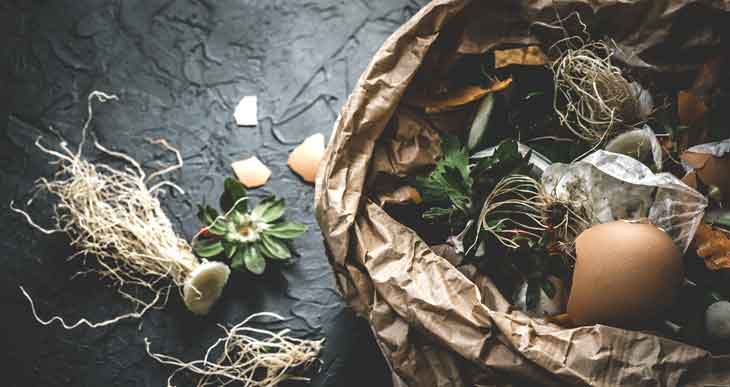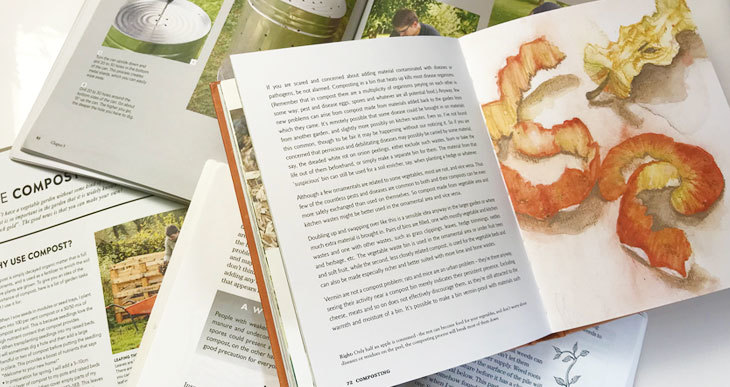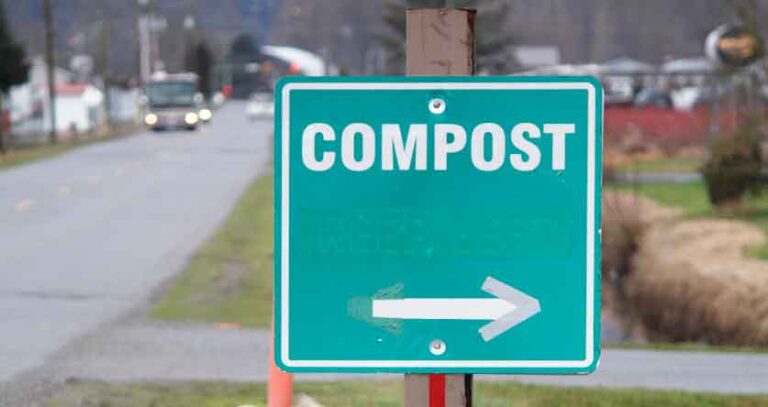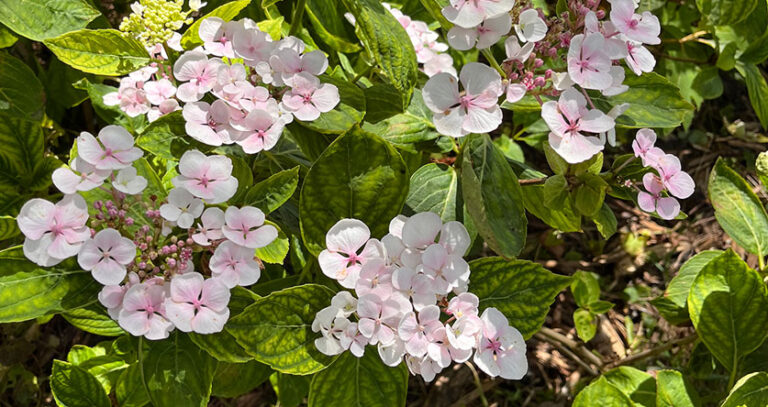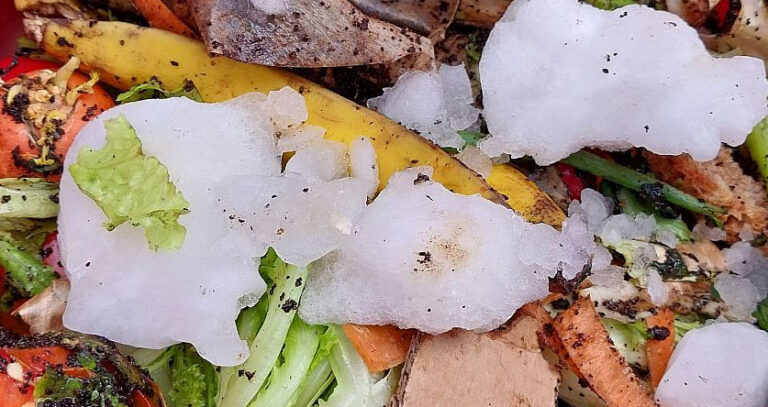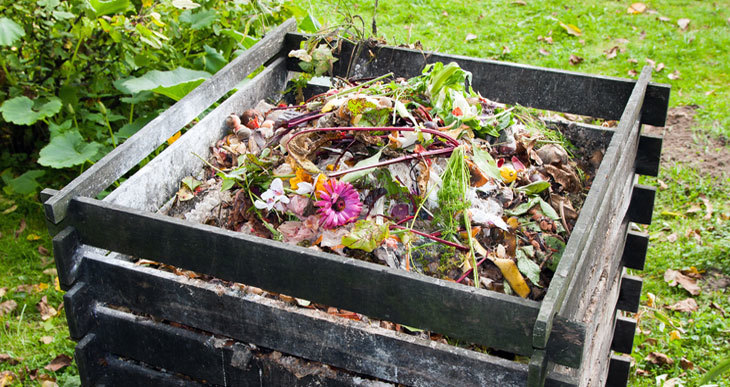What Size Compost Bin Do I Need (Get The Answer Here!)

If you’re thinking of getting a compost bin, it can be tricky to figure out how big your composter needs to be.
What if you get one too small, and your composting efforts never succeed? On the other hand, if you have limited space, you don’t want one that’s too big. And what’s the most effective size anyway?
Big, small, or medium – it all gets a bit confusing!
But if you take the time to consider a few simple questions, you’ll find it easier to understand what kind of bin fits your lifestyle the best.
You’ll be making luscious, nutrient-rich compost in no time!
In this guide, I’ll help you choose a perfectly proportioned container to get the most out of your composting habits.
What size compost bin do I need?
The recommended minimum compost bin size for hot composting is 1 cubic yard or 27 cubic feet. This corresponds to approximately 200 gallons, and a cube shape would take up a footprint of 3 feet by 3 feet. However, it’s also possible to achieve good compost without hot composting techniques and with smaller systems.
« One cubic yard »
If you read up about composting, you’ll come across this figure all the time.
It has become the standard rule of thumb for sizing a compost heap and achieving correct results from all your hard work.
But this « one size fits all » approach is a bit misleading, especially since most commercial compost bins are less than 1 yd3. And they still produce decent compost!
So what’s going on?
This recommendation is based on the idea that you want to get fast results using a « hot » composting technique. (This kind of method requires a fair bit of monitoring and input from the gardener).
But the good news is you don’t have to keep your compost roasting hot to get a decent final product.
In fact, many compost bins are designed to be filled progressively and require little work. You throw the waste in the top and harvest the results a few weeks or months later from a hatch at the bottom of the bin.
That’s why these systems are sometimes called « continuous composters.» They rely on a passive system that uses a cold composting method.
Therefore the size of the compost bin you need is more dependent on other lifestyle factors rather than the 1yd3 rule of thumb ideal.
How to choose the size of a compost bin
To choose the correct size compost bin, you need to assess several practical considerations about your household and lifestyle. Things like available space and family size will help determine the appropriately sized container.
For example, do you have a small exterior space and only want to compost kitchen scraps?
Or do you have an expansive backyard, and you’re a keen gardener who generates lots of yard trimmings?
Take into account things like:
- Available space for a composter.
- The size of your household and the amount of waste you produce.
- The size of your backyard and how much garden debris you create.
- The kind of composter you want to be (keen or occasional).
It’s mostly the amount and kind of organic waste materials you produce that affects the size of your compost bin.
Why does compost bin size matter?
The size of your compost bin influences the decomposition rate of organic waste. And as a general rule, bigger is better!
The size of the bin has an influence on two fundamental composting components:
- Moisture
- Heat
Water is an essential ingredient for successful composting. Unfortunately, the rate at which moisture is lost is often affected by the size of the compost heap. However, this is somewhat offset by using a closed container like a bin, which helps reduce moisture loss by evaporation.
Tip: Your compost moisture level is just right if it looks and feels damp.
Secondly, heat is necessary for composting microbes to do their job correctly. The size of your compost bin affects how warm the materials get. A large amount of composting materials has a bigger thermal mass than a smaller one, so bigger containers retain heat better.
Generally speaking, you can compost faster in a large bin than in a small one. For this reason, the general recommendation should be to go for the largest bin you can accommodate in the space you have.
Other things to consider when selecting the bin size:
Here are a few extra things you might want to consider before selecting the size of your compost bin:
- Your climate: Do you live in a particularly cool region? If so, you may benefit from a larger bin.
- Waste materials reduce to about 30-40% of their original size: The volume reduces significantly as they decompose. This can help you estimate the bin size compared to the amount of waste production.
- Speed: How fast do you want to produce compost. Keep in mind that bigger volumes generally produce faster results.
- Yard size: Keep in mind the size of your garden and seasonal fluctuations in the waste throughout the year.
What size compost bin should I buy?
The size of the bin you choose to buy should be adapted to the practical considerations about the quantity of waste produced by your family and garden.
Bearing in mind all of the previous points, let’s look at what options exist for different situations.
This should help you choose a compost bin that will be sufficient for your needs…
Small compost bin
Suppose you have limited space, and you’re only going to be composting small amounts of waste. In that case, you don’t need a large compost container.
The smallest-sized compost bins have a capacity of about 60 gallons. This should be enough for a family of around 1 to 4 people. This is great for someone who mostly composts grass clippings and kitchen scraps.
For example, this 65-gallon (8.7ft³) compost bin is one of the most compact systems on the market (Amazon link).
Remember, a compost bin needs to have a minimum thermal mass to effectively retain heat, so you won’t find traditional compost bins much smaller than this.
If you want something even more compact, the subpod mini is an attractive alternative. The compost mini has a volume of only 27 gallons (3.6 ft³).
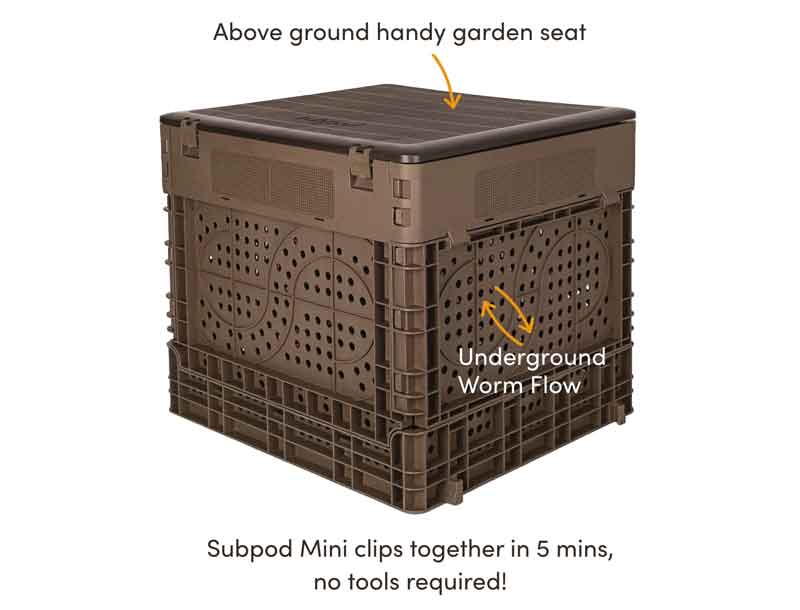
This ingenious system improves the composting process by partially submerging the compost container in your garden bed and effectively retaining heat. And it uses worms to accelerate the process!
If you were hoping for something smaller, you might want to consider a “compost tumbler.” These closed compost containers make it easy to regularly turn the waste materials. And the added oxygen speeds up decomposition for faster results.
This Miracle-Gro tumbler is one of the neatest and most compact tumblers available at only 18.5 gallons (2.5 ft³) (Amazon)
Standard compost bin size
Suppose you have a more extensive garden and plan to regularly add yard trimmings and kitchen waste. In that case, a standard-sized compost bin will be better suited to your requirements.
For example, this standard model has a capacity of 110 gallons (approximately 15 ft³). Therefore, this solution is better suited to regular gardeners with an average-sized backyard. In addition, it has the advantage of being fabricated with BPA-free recycled plastic.
And if you prefer something more attractive, this wooden compost bin holds around 100 gallons (approx 13 ft³). It’s built out of long-lasting cedarwood. (links to Amazon)
Large compost bin
If you are likely to be composting lots of yard waste and garden trimmings over the year, a standard compost bin will fill up quickly!
This is a shame because it could put you off composting during the year and force you to send your organic waste to landfills. So for people with extensive gardens or an allotment, a large compost bin is essential.
The fall is usually when gardeners have the most abundant organic waste, especially with the overload of fallen leaves. One of the quickest and easiest ways to expand your composting capacity is to add open bins like this expandable outdoor compost bin that can hold up to 220 gallons of materials (29 ft³).
Do you need 2 compost bins?

If you find yourself limited by the size of a single compost bin, consider opting for a dual system. This can be as simple as two bins placed side by side, or you can
Beyond this, you might see many benefits from building a two-bin composting system. These can be constructed relatively easily from old wooden pallets, for example.
As well as accommodating more significant amounts of waste, a dual bin method also presents certain advantages.
Having two compost bays allows you to leave one chamber to mature when it gets filled while continuing to fill the second bay with fresh organic matter.
And in the early stages of building the heap, you can transfer material from the first bin into the second, then fill the first bay with new materials. This constant movement and turning improves aeration and will speed up the results!
Conclusion: How big should a compost bin be?
Often the most challenging part of composting is fitting everything into the bin in the first place.
Remember that organic matter will break down much quicker if you chop it into small pieces. Use a shredder to chop up twigs and branches, or run your lawnmower over leaves before composting. This also helps fit more ingredients inside the compost bin!
As a general rule, go for the biggest compost container you can accommodate for your available space.
You won’t regret the extra room!


